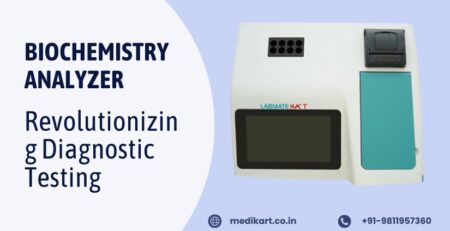The Power of Phototherapy: Unveiling the Benefits of phototherapy machine
Introduction:
Phototherapy, an effective treatment modality for various medical conditions, has gained recognition for its long-standing benefits. In recent years, technological advancements have brought about the development of sophisticated phototherapy machines, revolutionizing the utilization of light in healthcare settings. In this blog post, we will delve into the world of phototherapy machines, exploring their functions, benefits, and applications across different fields. Join us as we unravel the remarkable potential of these cutting-edge devices and understand why they have become indispensable tools in the realm of modern medicine.
- What is Phototherapy?: Phototherapy is a therapeutic technique that utilizes specific wavelengths of light to treat various medical conditions. It involves exposing the patient’s skin or body to light, which can have specific biological effects. Phototherapy is primarily used to target skin disorders, but its applications extend to other fields as well. By understanding the underlying science and mechanisms of phototherapy, healthcare professionals can harness its potential for the benefit of patients.
- The Science Behind Phototherapy: Phototherapy operates on the principle that light can stimulate cellular processes and influence biological pathways. Different wavelengths of light have varying effects on the body. For instance, doctors use ultraviolet (UV) light to treat specific skin conditions, and they employ red and blue light in other therapeutic applications. The interaction between light and the body’s tissues triggers physiological responses, such as the production of vitamin D, reduction of inflammation, and promotion of cellular regeneration.
- Types of Phototherapy Machines: Phototherapy machines come in various forms, each designed for specific purposes. UVB phototherapy machines emit ultraviolet B light, which is effective in treating skin conditions like psoriasis, vitiligo, and eczema. UVA phototherapy machines use longer wavelengths to treat conditions such as psoriasis and cutaneous T-cell lymphoma. Dermatologists use blue light phototherapy machines to treat acne because blue light possesses antimicrobial properties. Red light phototherapy machines stimulate collagen production, promoting skin rejuvenation and wound healing.
- Applications of Phototherapy Machines: Phototherapy machines find applications in diverse fields of medicine. In dermatology, they play a crucial role in managing skin conditions like psoriasis, vitiligo, and atopic dermatitis. The controlled exposure to specific wavelengths of light helps alleviate symptoms and improve the overall quality of life for patients. Phototherapy machines in neonatal care often treat jaundice in newborns. The blue light emitted by these machines helps break down bilirubin and prevent its buildup in the baby’s body.
Light therapy is used to treat Seasonal Affective Disorder (SAD), a type of depression that is related to changes in seasons. Phototherapy machines simulate natural sunlight, boosting mood and alleviating symptoms associated with SAD. In the field of mental health and wellness, light therapy has shown promising results in treating conditions such as depression, anxiety, and sleep disorders. Exposure to specific wavelengths of light helps regulate circadian rhythms and enhance overall well-being.
Phototherapy machines also find applications in pain management. Red and infrared light therapy can provide relief from chronic pain by reducing inflammation and stimulating tissue repair. Additionally, these machines aid in wound healing by promoting cell proliferation and collagen synthesis, leading to faster recovery.
- Advancements in Phototherapy Machine Technology: The continuous evolution of phototherapy machines has brought about significant advancements in recent years. Targeted light delivery systems enable precise treatment targeting specific areas while minimizing exposure to unaffected regions. Integrated safety features, such as sensors and timers, ensure optimal dosage and reduce the risk of adverse effects. Modern machines also allow for customized treatment protocols tailored to individual patient needs, optimizing therapeutic outcomes.
- Choosing the Right Phototherapy Machine: Selecting the appropriate phototherapy machine depends on various factors. Healthcare providers should consider factors like the intended use, the type and severity of the condition being treated, and the available clinical evidence. When patients use phototherapy at home, factors such as portability, ease of use, and safety features become crucial.
- Safety Precautions and Side Effects: Although phototherapy is generally considered safe, taking precautions and following guidelines is essential to minimize risks. Protective eyewear and proper shielding of unaffected areas during treatment are crucial to prevent potential damage. Some side effects, such as temporary skin redness or dryness, may occur but are typically mild and subside over time. It is important to consult healthcare professionals and adhere to recommended treatment protocols.
- Future Directions and Research: Ongoing research continues to explore the potential applications of phototherapy machines. The development of innovative light sources, such as light-emitting diodes (LEDs), and the integration of artificial intelligence (AI) algorithms for personalized treatment regimens hold promise for enhanced therapeutic outcomes. Furthermore, investigating the long-term effects and optimizing treatment protocols for various medical conditions remain areas of active research.
Conclusion:
Phototherapy machines have emerged as powerful tools in the realm of modern medicine. With their ability to target specific wavelengths of light, these devices offer a wide range of therapeutic applications, from dermatology to neonatal care, mental health, and pain management. As technology continues to advance, phototherapy machines will likely become even more precise, efficient, and customizable. By harnessing the power of light, healthcare providers can enhance patient care and improve the quality of life for individuals dealing with various medical conditions.


















Leave a Reply